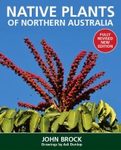By: Ashok Kumar(Editor), Geeta Joshi(Editor)
378 pages, Col photos, figs, tabs
![Recent Advances in Melia dubia Cav. Recent Advances in Melia dubia Cav.]()
Click to have a closer look
About this book
Customer reviews
Related titles
About this book
The forests, as the world's most important and valuable renewable natural resources, play an important role in the welfare of human beings. The demand for wood and wood products is increasing with economic growth and an increase in population. However, there is a constant decline in forest cover and wood. The gap between demand and supply of wood could nonetheless be brought down either by increasing forest area substantially or establishing plantations with genetically improved planting stock. In the present scenario, such an ever-increasing gap could easily be bridged with the latter approach which would ensure a sustained supply chain.
Globally, planted forests have been playing an important role in the supply of industrial wood. By 2015, the total area of planted forests the world over was estimated to be 290 million ha., and of course, Asia had the maximum contribution with 129 million ha. Though tree plantations cover an area of around 9.13 million ha., 2.70 % of the total geographical area of India, in the last seven years wood and wood products worth Rs.328.2 billion have been imported. Plantations are being established with exotics like Eucalyptus, Casuarina, Populus, etc., which have limitations of a narrow gene pool and susceptibility to insects and diseases. It is therefore essential to screen for a fast-growing, short-rotation indigenous tree species which could be prompted under various social and agroforestry schemes to produce industrial raw materials. Melia dubia Cav., an indigenous fast-growing short-rotation multipurpose tree species, was found to be the most suitable for fulfilling industrial and domestic wood requirements.
In this perspective, the Indian Council of Forestry Research and Education started a long-term multidisciplinary and systematic research programme on various aspects of M. dubia and released ten varieties for commercial cultivation with average productivity of 34.57 m3/ha/yr. Based on experience and the research results of different experiments, this book has been written and consists of thirty chapters that cover dynamic attributes of both cultivation and utilization perspectives as industrial raw material and deal with tools of selection, regeneration, clonal propagation, genotype × environmental interactions, progeny trials, molecular characterization, application of biotechnological tools for tree improvement, delimitation of the genus Melia, reproductive biology, DUS descriptors and wood analysis. The impetus has been equally drawn towards the analysis of various aspects to establish this species as raw material for various wood-based industries including timber, plywood, and pulpwood. The agroforestry models and allelopathic aptness as well as the impact of insect and disease infestations have also been covered appropriately. The phytochemical characterization and establishment of the species under heavy metal-rich soil have been elaborated.
Customer Reviews
By: Ashok Kumar(Editor), Geeta Joshi(Editor)
378 pages, Col photos, figs, tabs



































